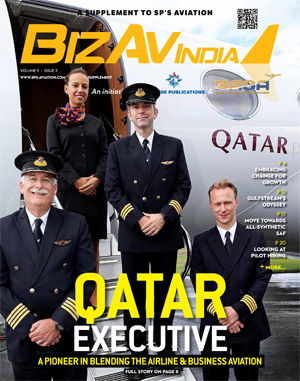From the Editor-in-Chief

At the recent Aero Expo Conference in New Delhi, the business aviation community was in good numbers as they are going to be an integral part of the government’s initiative of ‘enabling air connectivity’. It is understandable that the community is waiting to see how the Regional Connectivity Scheme (RCS) is going to play out in the coming months. While one can expect teething problems, industry experts believe that these can be navigated through, thanks to a proactive ministry. However, many of them have been expressing concerns on how the government entities are going to facilitate the ambitious plans of the government. Organisations such as the Directorate General of Civil Aviation (DGCA) are still caught up in a time warp and needs to be shaken up.
There are issues to do with Viability Gap Funding (VGF), issues to do with foreign registered aircraft, issues to do with leasing, issues to do with training, etc, and all these need to be addressed. The good thing is that there are conversations happening out in the open and the government is listening. The government has aptly chosen ‘UDAN’ (flight) as its emblem for RCS and the acronym for ‘UDAN’ is Ude Desh ka Aam Naagrik (the common man will fly) and that cannot happen just with commercial airlines, but with regional players, general aviation and business aviation segments. It is going to be a coordinated movement.
Another ingredient in this growth enabler, according to Colonel Sanjay Julka (Retd) is the need for a cultural shift amongst all stakeholders of the aviation industry, besides of course how the nation perceives ‘air travel’. In recent years, that perception has changed and the ‘common man’ is taking to the air than previously ever. Similar shift is expected in the way business aviation is perceived. Various industry bodies have been working to remove the perception that business aviation is a luxury and foremost of the bodies, the National Business Aviation Association (NBAA) of the US has been aggressive in its campaign ‘No Plane, No Gain’. At this year’s Business Aviation Conference in Orlando, which was a resounding success, experts were quick to point out the economic benefits of business aviation, moving workforce to locations which have poor accessibility. According to the NBAA, business aviation contributes more than $150 billion to the US economy each year, has a positive effect on the balance of trade and supports 1.2 million manufacturing and service jobs. Endorsing this is Claudio Camelier, Vice President of Embraer Executive Jets, who states that it took many years for the United States business aviation industry to get to where they are and we see the potential of business aviation in India. While supporting and applauding the efforts of the BAOA, he expects business aviation to flourish in the not so distant future.
Happy reading!
J. Baranwal
Editor-in-Chief





